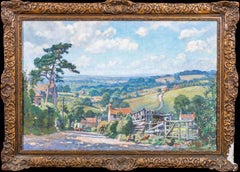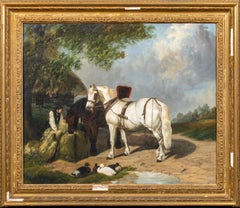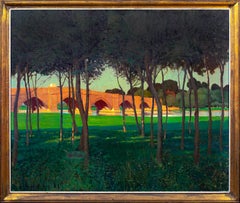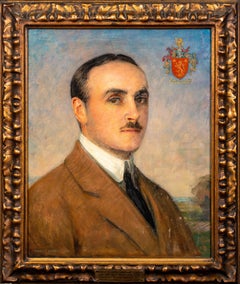Want more images or videos?
Request additional images or videos from the seller
1 of 5
UnknownOrpheus Enchanting The Animals, 17th Century Circle of Cornelis Saftleven
Price:$4,335.49
$6,162.99List Price
About the Item
- Dimensions:Height: 29.5 in (74.93 cm)Width: 23 in (58.42 cm)
- Medium:
- Period:
- Condition:
- Gallery Location:Blackwater, GB
- Reference Number:Seller: 7832951stDibs: LU1577213083402
About the Seller
4.9
Vetted Professional Seller
Every seller passes strict standards for authenticity and reliability
Established in 2008
1stDibs seller since 2021
304 sales on 1stDibs
Typical response time: 2 hours
Authenticity Guarantee
In the unlikely event there’s an issue with an item’s authenticity, contact us within 1 year for a full refund. DetailsMoney-Back Guarantee
If your item is not as described, is damaged in transit, or does not arrive, contact us within 7 days for a full refund. Details24-Hour Cancellation
You have a 24-hour grace period in which to reconsider your purchase, with no questions asked.Vetted Professional Sellers
Our world-class sellers must adhere to strict standards for service and quality, maintaining the integrity of our listings.Price-Match Guarantee
If you find that a seller listed the same item for a lower price elsewhere, we’ll match it.Trusted Global Delivery
Our best-in-class carrier network provides specialized shipping options worldwide, including custom delivery.You May Also Like
Forest Landscape, Germany, Early 19th Century
Located in Greding, DE
Landscape painting with figures, a large central deciduous tree, and cattle in the background.
Unsigned.
Oil on canvas, relined.
Image size: 74 x 101 cm.
Empire frame, gold-patinate...
Category
Early 19th Century Landscape Paintings
Materials
Canvas, Oil
$3,329
H 35.04 in W 45.67 in D 2.37 in
Don Quichote and Sacho pansa
Located in Greding, DE
Wilhelm Marstrand (1810-1873), Don Quichote und Sancho Pansa. Oil on canvas with a very nice frame: 45,5 x 57 cm.
Category
19th Century Figurative Paintings
Materials
Canvas, Oil
18th Century by Paolo Monaldi Peasants Playing Cards Oil on Canvas
Located in Milano, Lombardia
Paolo Monaldi (Rome, Italy, 1710-1779)
Title: Peasants playing cards
Medium: Oil on canvas
Dimensions: Without frame 31 x 40.5 cm - with frame 43.5 x 52 cm
Carved and gilded wooden f...
Category
18th Century Italian School Landscape Paintings
Materials
Canvas, Cotton Canvas, Oil
$4,922 Sale Price
20% Off
H 12.21 in W 15.95 in D 1.97 in
What Remains, Contemporary Abstract Landscape Painting
Located in Philadelphia, PA
This painting, titled What Remains, presents a haunting yet vivid interpretation of a barren, abstracted landscape. The composition is divided into two primary zones: a stark white f...
Category
2010s Abstract Abstract Paintings
Materials
Canvas, Oil
$6,500
H 60 in W 56 in D 2 in
Autumn impressionist, 19th century, Scottish, Driving Cattle
Located in Hillsborough, NC
Period impressionist painting, 'Driving Cattle' is by Scottish 19th century artist William Mouncey (1852-1901). His particular style is e...
Category
19th Century Impressionist Landscape Paintings
Materials
Canvas, Oil
$2,242 Sale Price
25% Off
H 22 in W 17.5 in D 2 in
Haystacks in the Highlands, Scottish Landscape, 19th Century
By Duncan Cameron
Located in Hillsborough, NC
Fine painting by renowned and award-winning Scottish artist Duncan Cameron of his favorite subject, the haystacks in autumn with the scenic Scottish cou...
Category
1870s Impressionist Landscape Paintings
Materials
Canvas, Oil
$3,920 Sale Price
20% Off
H 13.25 in W 20.5 in D 1 in
On the Fife Coast, Scottish Colourist, 20thC, impressionist oil on canvas
By John Maclauchlan Milne
Located in Hillsborough, NC
John Maclauchlan Milne (1886-1957), became a post impressionist artist in the Scottish Colourist tradition. His work has been exhibited in the Royal Scottish Academy. and in New Yor...
Category
1910s Impressionist Landscape Paintings
Materials
Canvas, Oil
$8,900
H 16 in W 20 in D 1 in
The Ancient Beeches, Sunset Shadows and River, English Lsndscape, 19th century
By Alfred de Breanski Sr.
Located in Hillsborough, NC
Fine 19th century landscape oil on canvas by Alfred de Breanski Sr., this sunset, color and light, are exceptional in this work. Alfred De Brea...
Category
Late 19th Century Naturalistic Landscape Paintings
Materials
Canvas, Oil
$13,520 Sale Price
20% Off
H 29.5 in W 41 in D 2 in
Ferry of the Loaf Historic Story, River Tay Scotland, Ship and Landscape
Located in Hillsborough, NC
'Ferry of the Loaf' comes from the legendary tale of Thane of Fife, MacDuff, escaping the fury of MacBeth crossing the River Tay in the 11th century. The painting comes with a handw...
Category
Early 1900s Naturalistic Landscape Paintings
Materials
Canvas, Oil
$2,940 Sale Price
30% Off
H 23.75 in W 35.5 in D 3 in
‘Summer Evening’ British landscape and figures, cattle in moonlit scene
By George Augustus Williams
Located in Hillsborough, NC
Fine 19the century landscape by member of the renowned Williams family of artists, George Augustus (1814-1901). George Augustus was the son of Edward Williams (1781-1855), whose wife...
Category
Mid-19th Century Naturalistic Landscape Paintings
Materials
Canvas, Oil
$2,495
H 16 in W 26 in D 1 in
More From This Seller
View AllA Country Lane, Somerset, dated 1939 by THOMAS WILLIAM ARMES (1894-1963)
Located in Blackwater, GB
A Country Lane, Somerset, dated 1939
by THOMAS WILLIAM ARMES (1894-1963)
Large 1939 English Country lane landscape, Somerset, oil on canvas by Thomas William Armes. Good quality an...
Category
Early 20th Century Landscape Paintings
Materials
Canvas, Oil
Feeding The Plough Horses, 19th Century
By Edward Robert Smythe
Located in Blackwater, GB
Feeding The Plough Horses, 19th Century
attributed to Edward Robert SMYTHE (1810-1899)
Large 19th Century English farm scene of a farmer feeding his pl...
Category
19th Century Landscape Paintings
Materials
Canvas, Oil
Clifton Hampden Bridge, early 20th Century by EVELYN FOTHERGILL ROBINSON
Located in Blackwater, GB
Clifton Hampden Bridge, early 20th Century
by EVELYN FOTHERGILL ROBINSON (1872-1939)
Large Early 20th Century view of Clifton Hampden Bridge in summer seen through a glade of trees...
Category
19th Century Landscape Paintings
Materials
Canvas, Oil
Portrait Of Captain Arthur George Coningsby Capell, dated 1915
Located in Blackwater, GB
Portrait Of Captain Arthur George Coningsby Capell, dated 1915
by Charles A. Buchel (1872-1950)
Large 1915 English portrait of Captain Arthur Ca...
Category
Early 20th Century Landscape Paintings
Materials
Canvas, Oil
Portrait Of A Zampogna Player, 18th Century
Located in Blackwater, GB
Portrait Of A Zampogna Player, 18th Century
Circa 1770 Italian School Oil On Canvas
Fine Large 18th Century Italian School portrait of a young gentleman holding a Zampogna, oil o...
Category
18th Century Landscape Paintings
Materials
Canvas, Oil
Hawk Attacking A Duck, 18th Century
Located in Blackwater, GB
Hawk Attacking A Duck, 17th/18th Century
circle of Adriaen DE GRYEFF (1657-1722)
Fine huge 17th Century Dutch Old Master scene of a hawk attacking...
Category
18th Century Landscape Paintings
Materials
Oil, Canvas
Recently Viewed
View AllMore Ways To Browse
Orpheus Painting
Maine Oil Paintings
Oil Paintings Misty
San Francisco Landscape Painting
Vintage Arc De Triomphe
Vintage Lake Signs
Canada Landscape Oil Paintings
Carmel Oil
Farmhouse Oil Painting
Landscapes Oil Artist H Hudson
Paintings From Taos Nm Artists
Riley Artist
Russell Oil Paintings
Sunrise Impressionist
Surreal Landscape Oil Paintings
Union Pacific
Used Church Steeples
William Sawyer



